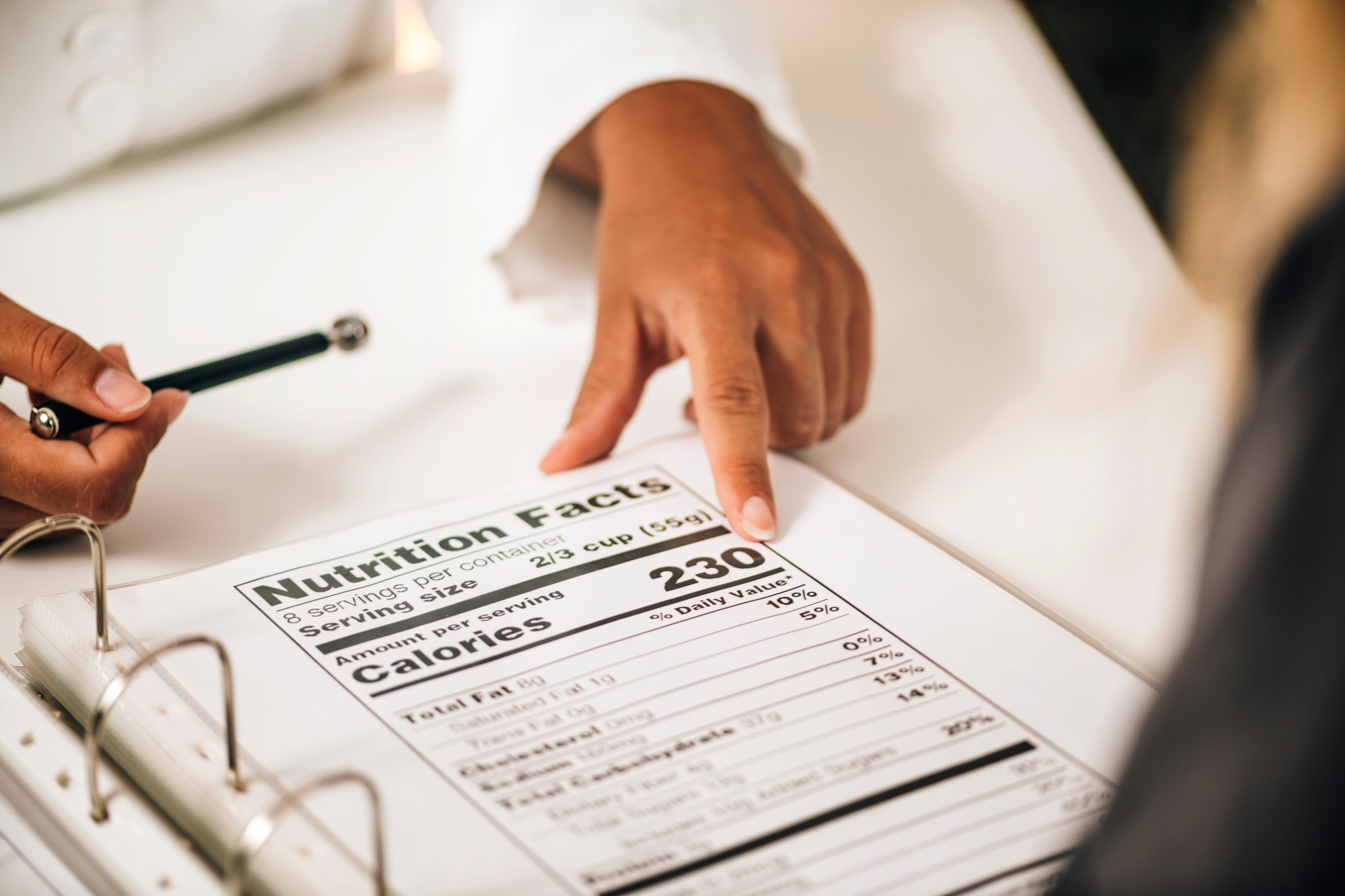One of the first steps in eating better is learning to read and understand food labels. By the end of this post, you’ll know exactly what to look for on food labels, understand the sneaky marketing tricks, and feel confident about choosing nutritious options.
Start with the Serving Size
One of the first things you should check is the serving size. This is key because all the information on the label—calories, nutrients, and % Daily Value—are based on that serving. Here’s the catch, though: the serving size doesn’t always match how much you’d typically eat.
For example, a bag of chips might list 150 calories per serving, but the serving size is 10 chips, and realistically, you might eat 30 chips in one sitting. To truly understand what you’re consuming, compare the serving size to what you’re actually eating.
Focus on the Key Nutrients
Understanding what’s in your food starts with knowing which nutrients to prioritize. Look out for these main components on the label:
- Calories – Keep this number in mind, especially if you’re watching your intake. But remember, not all calories are created equal.
- Fats – Check for saturated and trans fats. Aim for foods with low saturated fats and avoid trans fats altogether—they’re bad news for your heart.
- Sodium – Many processed foods are packed with sodium. Look for “low sodium” options, especially if you’re trying to keep your blood pressure in check.
- Sugars – Watch out for added sugars, not just natural sugars found in fruits and dairy.
- Fiber – High-fiber foods are amazing for digestion and help keep you fuller longer.
By focusing on these nutrients, you can make healthier choices without needing a degree in nutrition.
Decode the % Daily Value (%DV)
Ever stared at the % Daily Value column and wondered what it really means? Don’t worry—this number is actually pretty straightforward.
5% or less means the food is low in that nutrient.
20% or more means it’s high.
For a healthier diet, aim for foods low in saturated fat, sodium, and added sugars, but high in fiber, vitamins, and minerals.
Side note: These values are based on a 2,000-calorie diet. If your needs are different, adjust accordingly!
Read the Ingredient List
The ingredient list might just be the best-kept secret on a food label. Ingredients are listed in descending order by weight, meaning the first ingredient is the most abundant.
For example, if sugar is one of the first three ingredients, it’s probably not the healthiest choice. And keep an eye out for multiple types of the same ingredient; companies often use different names to scatter them across the list.
Hidden Names to Watch For
- Sugar: High fructose corn syrup, agave nectar, molasses, anything ending in “-ose” (glucose, fructose).
- Sodium: Salt, MSG, baking soda.
- Fats: Hydrogenated oils, lard, shortening.
For simplicity, opt for foods with shorter ingredient lists and recognizable items.
Don’t Fear Unfamiliar Ingredients
Sometimes, those long, scientific-sounding names on ingredient lists aren’t as scary as they look. For example:
Thiamine mononitrate: Just a fancy term for vitamin B1.
Ascorbic acid: A technical way to say vitamin C.
But if you’re unsure, a quick search can help you understand what you’re putting in your body.
Beware of Misleading Marketing Claims
“Low-fat,” “all-natural,” “made with whole grains”—these claims can be sneaky. While they may sound healthy, they don’t always tell the full story.
For example:
“Low-fat” products often have added sugar to make up for flavor.
“Whole grain” doesn’t always mean it’s packed with fiber.
Always flip the package and look at the actual nutrition label instead of relying on front-of-the-box claims.
Conclusion
Learning to read food labels takes a little practice, but once you get the hang of it, it’s a game-changer. From understanding serving sizes to decoding ingredients and % Daily Values, you’re now equipped to make informed, healthier choices.







